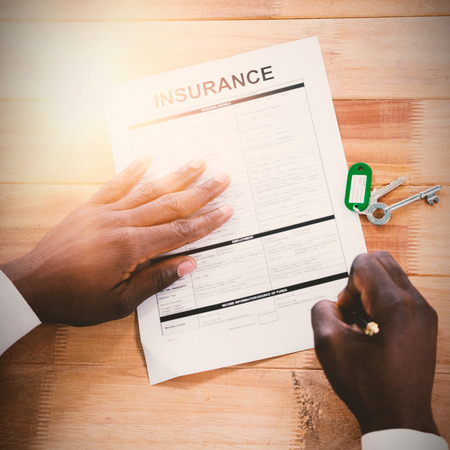Understanding Natural Disaster Risks in the U.S.
When it comes to mitigating natural disaster risks, it’s essential for both homeowners and renters to first understand the landscape of threats across the United States. The U.S. is geographically diverse, which means the type and severity of natural disasters vary greatly from region to region. From hurricanes along the Gulf and Atlantic coasts, wildfires in the West, tornadoes in the Midwest, to earthquakes on the Pacific Rim, every location presents its own unique set of challenges. As a property owner or tenant, your risk profile is heavily influenced by where you live. For instance, residents in Florida must be vigilant about hurricane preparedness, while those in California focus more on earthquake safety and wildfire prevention. Renters may face different obligations than homeowners, but both share a need to proactively assess environmental threats specific to their area. Understanding these regional patterns isn’t just about awareness; it’s a crucial step toward making informed decisions about prevention strategies and insurance coverage that can make all the difference when disaster strikes.
2. Proactive Prevention: Preparing Your Home or Rental
Taking proactive steps to safeguard your property is one of the most effective ways to reduce both financial and emotional risks from natural disasters. Whether you own your home or rent, investing time and resources into prevention can pay off when disaster strikes. The strategies below are tailored for different types of natural hazards common in the U.S., such as floods, wildfires, tornadoes, and hurricanes.
Practical Prevention Measures by Disaster Type
| Disaster | Homeowner Actions | Renter Actions |
|---|---|---|
| Floods |
|
|
| Wildfires |
|
|
| Tornadoes |
|
|
| Hurricanes |
|
|
Investing in Upgrades: Is It Worth It?
The cost of preventive upgrades varies widely, but even small investments—like weatherproofing doors or anchoring furniture—can significantly reduce your exposure to loss. For homeowners, larger projects (such as elevating a home in a flood-prone zone) can be offset by lower insurance premiums over time. Renters should focus on portable solutions that protect their personal property and ensure they understand their lease’s policies regarding disaster preparedness.
Checklist: Essential Steps for All Residents
- Create a digital inventory of valuables (photos, receipts)
- Review emergency communication plans with household members
- Sign up for local emergency alerts and warnings (e.g., FEMA, community apps)
- Keep important documents in a grab-and-go waterproof bag or safe deposit box
- If living in a shared building, know the building manager’s disaster procedures in detail
Your Risk Management Mindset Pays Off
No matter where you live in the U.S., investing effort now means less stress later. Proactive prevention isn’t just about protecting physical assets—it’s also about ensuring business continuity if you work from home, maintaining peace of mind, and demonstrating responsibility to insurers and landlords. Taking these practical steps today is one of the smartest moves any homeowner or renter can make.

3. Insurance Essentials: Policies Every American Should Know
When it comes to mitigating natural disaster risks, understanding your insurance options is critical—whether you own or rent your home. The American insurance market offers a range of policies, but not all coverage is created equal. Here’s what every homeowner and renter should keep on their radar.
Homeowners and Renters Insurance Basics
Standard homeowners insurance typically covers damage caused by fire, windstorms, hail, lightning, and certain types of water damage. Renters insurance, while similar, protects your personal belongings and provides liability coverage but does not insure the physical structure itself. Both policy types usually offer loss-of-use coverage if you’re temporarily displaced. However, neither standard homeowners nor renters policies cover every risk associated with natural disasters.
Flood and Earthquake Endorsements
It’s a common misconception that basic policies include flood or earthquake protection. In reality, these are generally excluded and must be added as separate endorsements or standalone policies. For floods, Americans can access coverage through the National Flood Insurance Program (NFIP) or private insurers. Earthquake insurance is available in high-risk regions such as California and parts of the Pacific Northwest; check if your provider offers a relevant rider.
Coverage Gaps: What Isn’t Covered
Beware of gaps that could leave you exposed. For example, mudslides and landslides are often excluded even from flood or earthquake policies. There may also be sub-limits for valuables like jewelry or electronics, and some forms of water damage (like sewer backups) require specific endorsements. Always ask for a detailed breakdown of inclusions and exclusions.
What to Look for in a Policy
When shopping for coverage, prioritize policies with replacement cost value (RCV) rather than actual cash value (ACV), as RCV reimburses at today’s prices without depreciation factored in. Compare deductibles, limits, and additional living expense provisions for when disaster strikes. For self-employed individuals or those running a home-based business, consider extra riders to protect business property or lost income.
By thoroughly reviewing your insurance portfolio—and addressing potential gaps—you can ensure a more resilient financial future regardless of what Mother Nature throws your way.
4. Emergency Planning and Community Resources
When it comes to mitigating natural disaster risks, developing a robust emergency plan is essential for both homeowners and renters. A well-crafted emergency plan not only safeguards your household but also ensures that you can respond quickly and efficiently when disaster strikes. Begin by identifying potential hazards specific to your region—whether its hurricanes, wildfires, earthquakes, or floods—and map out evacuation routes, communication strategies, and key contacts.
Building an Effective Emergency Plan
Preparation goes beyond storing supplies. Assign responsibilities within your household, establish a meeting point, and keep copies of important documents in a secure location. For self-employed individuals working from home, consider data backup protocols and business continuity plans to minimize downtime.
| Plan Component | Homeowners | Renters |
|---|---|---|
| Evacuation Routes | Create custom routes from every room; know local shelters | Know building exits; familiarize with apartment policies |
| Emergency Contacts | Neighborhood list; utility providers; insurance agents | Landlord/property manager; local agencies; insurance company |
| Document Storage | Fireproof safe; cloud storage for deeds & policies | Cloud storage for lease agreements & insurance details |
| Business Continuity (Self-Employed) | Remote backup system; alternative workspace identified | Laptop go-bag; offsite backup access |
Leveraging Local Resources & Community Programs
Your local community is a powerful ally in disaster preparedness. Many U.S. cities and counties offer free resources such as CERT (Community Emergency Response Team) training, public alert systems like CodeRED or Nixle, and emergency supply distributions. Stay connected with neighborhood associations or online platforms like Nextdoor to receive real-time updates and share resources.
Key Community Resources to Engage With:
- CERT Training: Gain hands-on skills for disaster response and recovery.
- Local Shelters: Know locations and pet policies before an event occurs.
- Public Safety Alerts: Sign up for local text/email alerts on emergencies.
- Mutual Aid Networks: Collaborate with neighbors for shared supplies and support.
- Red Cross/ FEMA Programs: Access guidance, checklists, and grants post-disaster.
A Proactive Approach Pays Off
The more you engage with local programs and integrate their resources into your personal emergency plan, the greater your resilience in the face of natural disasters. Whether you own your home or rent, staying proactive through planning and community involvement reduces risk exposure—a smart strategy for anyone managing their own assets or business from home.
5. Cost-Benefit Analysis: Weighing Prevention and Insurance
When it comes to safeguarding your home or rental against natural disasters, both proactive mitigation and insurance coverage require careful financial consideration. For American homeowners and renters, understanding the true cost-benefit balance is essential—not just for immediate protection but for long-term resilience.
Understanding Upfront vs. Ongoing Costs
Mitigation efforts, such as retrofitting your home for earthquakes or installing hurricane shutters, typically involve significant upfront investments. Insurance premiums, on the other hand, represent an ongoing cost that can fluctuate depending on location, property value, and coverage levels. It’s crucial to evaluate whether investing in prevention could ultimately lower your insurance premiums over time or reduce out-of-pocket losses after a disaster.
Long-Term Financial Resilience
The right combination of mitigation and insurance isn’t about choosing one over the other—it’s about maximizing value. While preventive measures may not eliminate risk entirely, they often reduce the severity of losses and speed up recovery. Many insurers also offer premium discounts for homes with proven mitigation upgrades, which means your initial investment can pay off year after year.
Making Informed Decisions as a Homeowner or Renter
Conduct a thorough cost-benefit analysis tailored to your risk profile and financial goals. Consider local hazards (like wildfires in California or floods in Louisiana), available community resources, and your own budget constraints. Don’t overlook hidden costs such as temporary relocation or loss of use—comprehensive insurance with appropriate riders can be invaluable here.
Ultimately, building financial resilience against natural disasters requires a strategic blend of prevention and protection. By weighing the costs now, you’ll be better equipped to weather whatever comes your way—and protect both your property and your peace of mind for years to come.
6. After Disaster Strikes: Filing Claims and Recovery
Step 1: Prioritize Safety and Assess the Situation
Your first priority after a natural disaster is personal safety. Ensure everyone in your household is safe and seek emergency assistance if needed. Once it’s safe, conduct a preliminary assessment of your property, but avoid entering severely damaged structures until cleared by authorities.
Step 2: Document Losses Thoroughly
Begin documenting all damages as soon as possible. Take clear photos and videos of affected areas and belongings from multiple angles. Make a detailed inventory list, including descriptions, approximate values, and receipts if available. For renters, document any damage to personal property and the unit itself.
Step 3: Contact Your Insurance Provider Promptly
Reach out to your insurer immediately—many have 24/7 hotlines for disaster claims. Provide your policy number, describe the event, and ask about specific documentation they require. Be proactive but patient; disasters often result in high claim volumes, so response times may be delayed.
Navigating the Claims Process
- File Quickly: Submit your claim as soon as you can to avoid delays in processing.
- Keep Records: Save all correspondence with your insurer, including emails, phone call logs, and claim numbers.
- Meet with Adjusters: Your insurer will likely send an adjuster to inspect the damage. Be present during their visit to answer questions and provide documentation.
Step 4: Maximize Your Recovery Resources
If your losses exceed coverage limits or you’re uninsured, explore federal and state disaster aid programs such as FEMA (Federal Emergency Management Agency) grants or SBA (Small Business Administration) disaster loans. Local nonprofits and community organizations may offer temporary housing, food, or financial assistance for both homeowners and renters.
Proactive Tip for Self-Employed Individuals
If you run a home-based business, keep separate documentation for business losses. You may be eligible for additional recovery resources or tax relief through the IRS Disaster Assistance program.
Step 5: Stay Informed and Persistent
The recovery process can be long and challenging. Stay informed about deadlines for filing claims or applying for aid. Follow up regularly with insurance representatives, keep organized records, and don’t hesitate to escalate issues if your claim stalls. Remember—being thorough and persistent helps ensure you receive the support you need to recover from disaster events effectively.


